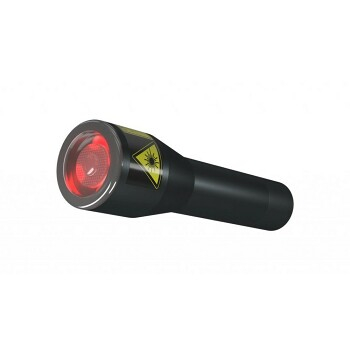Excellent Advice To Deciding On A Safe Laser Treatment
Excellent Advice To Deciding On A Safe Laser Treatment
Blog Article
How Does Low-Level Laser Therapy That Is Safe (Lllt) Is Also Referred To As Low-Level Therapy Aid In Treating Ulcerative Boils?
Safe Laser Low Level Laser Therapy (LLLT), can be utilized to treat wounds that are ulcerative in several ways. It stimulates fibroblast activity, collagen synthesis and angiogenesis (formation of new blood vessels) which are vital processes for wound healing. This can promote faster healing of ulcerative wounds.
Reduced Inflammation- LLLT is anti-inflammatory by inhibiting the release of pro-inflammatory cytokines as well as promoting the production of anti-inflammatory mediators. LLLT is effective in ulcerative wounds where inflammation can cause tissue destruction and slow healing.
Pain Relief LLLT reduces pain by reducing nerve conduction. It also helps to alleviate discomfort in ulcerative sores which can cause severe pain.
Improved Blood Circulation LLLT improves vasodilation and microcirculation that results in increased circulation of blood to the site of the wound. Improved circulation brings oxygen and nutrients into tissues. This promotes healing and helps in the elimination of waste and toxins.
The antimicrobial properties of LLLT may reduce infection risk in wounds that are ulcerative. LLLT helps to clear bacterial waste which reduces wound infections.
Reduced Scar formation - LLLT helps reduce scarring in ulcerative wounds by encouraging tissue regeneration and remodeling. By stimulating the production collagen fibers, and by promoting the alignment of collagen bundles LLLT could help produce stronger scar tissue.
In general Low-Level Laser Therapy by safe Laser is an effective and non-invasive way to treat ulcerative wounds. It promotes faster healing of wounds, lessens pain, and improves overall outcomes of wounds. However, it's important to speak with a healthcare professional for proper wound care and treatment guidelines prior to utilizing LLLT to treat ulcerative wounds. Read the top rated safe laser 1800 for blog recommendations including lágy lézer kezelés, lágylézer kezelés árak, lágylézer ár, gyógyító lézer, gyógyító lézer készülékek, orvosi lágylézer, lágy lézer kezelés, lagy lezer, laser hu, lézer bérlés and more.
What Is The Safe Low-Level Laser Treatment (Lllt) For Throat Issues?
Safe Laser low level laser therapy may help throat problems in several ways. LLLT may help reduce swelling and discomfort in cases such as pharyngitis or tonsillitis.
Pain Relief The use of LLLT minimizes discomfort and pain when you suffer from conditions such as sore throat and throat irritation.
Improved tissue healing- LLLT increases cellular metabolism leading to accelerated repair and regeneration. LLLT helps promote quicker healing of conditions such as throat ulcers. This reduces the risk of complications as well as improving overall throat wellness.
Improved Blood Circulation – LLLT increases vasodilation, microcirculation and blood flow into the throat tissues. Improved blood circulation can help provide nutrients and oxygen to the inflamed or injured tissues, which aids in healing and reducing inflammation.
LLLT helps reduce swelling through promoting lymphatic drainage and reducing fluid buildup. It can be particularly helpful to those suffering from ailments such as laryngitis or swelling following surgery.
Management of Vocal Disorders – LLLT could aid in improving the quality of your voice and decrease any symptoms that are related to disorders of the voice, such as hoarseness. By reducing inflammation and promoting repair of tissue, LLLT helps restore vocal function.
Overall, Safe Laser low-level laser therapy offers a non-invasive and drug-free approach to managing various throat problems and symptoms like inflammation, pain, and difficulty swallowing. Before taking LLLT to treat throat issues it is recommended to consult with a qualified healthcare professional for a proper diagnosis and treatment. View the most popular safe laser 1800 for blog tips including lágylézer készülék, laser hu, lágylézer készülékek, lágy lézer kezelés, lágylézer kezelés budapest, mozgásszervi problémák, orr lézer készülék, lágylézer árak, laser hu, lézer bérlés and more. 
How Long Does A Safe Laser Heal A Wound?
Safe Laser Low-Level Laser Therapy (LLLT) is extremely effective for healing wounds. But, it is contingent on many factors, including the nature and severity of the wound as well as the patient's reaction to the treatment. In general, several LLLT treatments spread over a certain amount of time is advised to ensure optimal healing of wounds.
Type and Strength Of The Wound - The type and the severity of the wound can influence the number of LLLT sessions needed. A less severe or smaller wound may require less sessions than more severe, larger wounds. In addition, chronic or subclinical wounds may require more sessions.
Wound Healing Stage- The phase of wound healing could influence the number of LLLT sessions required. Different stages of wound healing, including inflammation, proliferation, and remodelling, could require different treatment strategies. LLLT can be utilized to promote tissue regeneration and repair at all stages of wound healing.
Individual Response - Individual factors such as the overall health and immune system affect how healing of a wound is achieved with LLLT. Certain individuals may experience faster healing and wound closure when treated, whereas others may need more extended treatment.
Treatment planThe treatment plan suggested by a healthcare provider will have a significant effect on the frequency and quantity of LLLT treatments to heal wounds. Healthcare professionals may customize the treatment plan to each person's requirements, which could require scheduling LLLT sessions at least once per week or at specific intervals over a long period of time.
Some people will experience improvement in wound healing with just a few LLLT treatment sessions. Others might require a more extensive course of therapy to get the greatest outcomes. To speed up healing from wounds it is crucial that you adhere to the treatment plan that was prescribed by a medical expert. It is also important to be present for all scheduled LLLT treatments. Contact with your healthcare provider and monitoring the development of the wound are also essential for the proper treatment and adjustments to the treatment program.